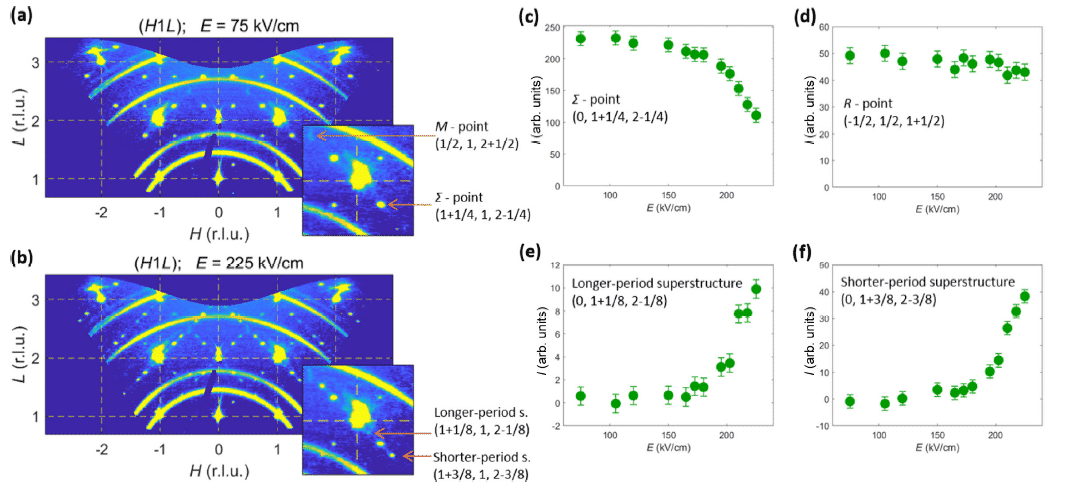
Ferrielectric-like structure as the origin of smearing of field-induced transitions in antiferroelectric films
2School of Physical Science and Technology, Soochow University, Suzhou, China
3Department of Materials Science and Engineering, University of California, Berkeley, Berkeley, USA
4Materials Sciences Division, Lawrence Berkeley National Laboratory, Berkeley, USA
Field-induced structural changes that accompany antiferroelectric-ferroelectric switching are under precise methodological focus of experimentalists and theoreticians. In thin films these phenomena are especially opaque yet intriguing, because the characteristic double P-E loops deviate strongly from the crystal case. Here we explain a part of those deviations by showing experimentally a highly unusual intermediate structure that forms in PbZrO3/SrRuO3/SrTiO3 heterostructures under electric field. It is long-period modulated yet commensurate which differs it from ubiquitous incommensurate structures, and is also ferrielectric-like in the sense of having uncompensated polarization, so its appearance with field should smear the P-E response similarly to how it has been observed in those heterostructures. Methodology of the work comprises in-situ x-ray diffraction study, thin film crystallography, ab-initio and semi-empirical analysis of the energy landscapes that determine the behavior. Notable finding of such an analysis is that the ferrielectric-like phase gets stabilized because owing to the specific role of the energy of heterophase boundaries that separate the regions with newly-forming structure and the already-existing (host) antiferroelectric phase. The work shows an interesting connection between the physics of antiferroelectrics and the physics of modulated structures in antiferromagnetics, some of the well-developed methodology of magnetic problems can be fruitfully adapted to illuminate the otherwise unclear problems in antiferroelectrics. The work has been supported by Russian Science Foundation.

Fig. 1. Diffraction signatures of the field-induced ferrielectric-like phase.
Powered by Eventact EMS
